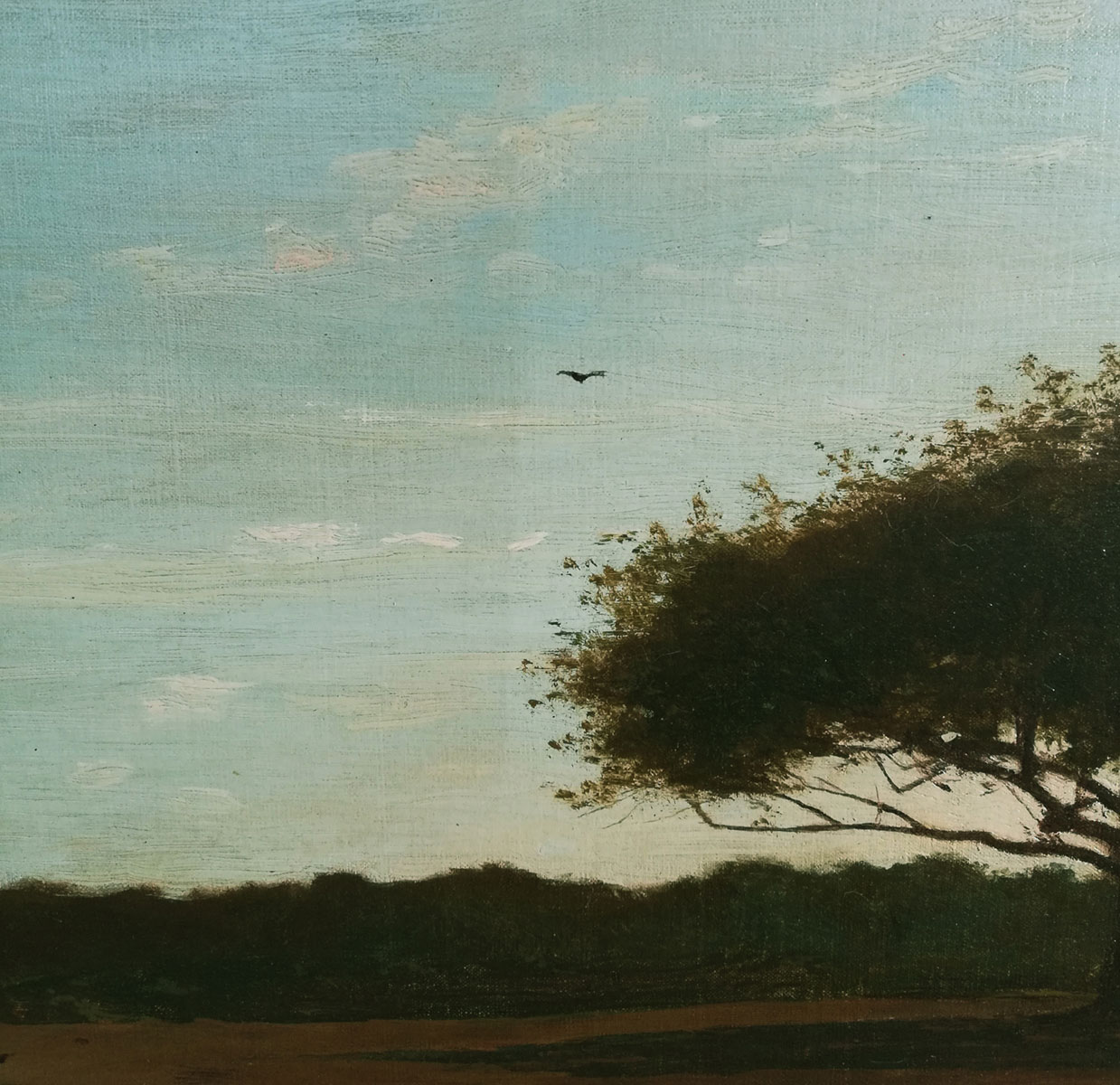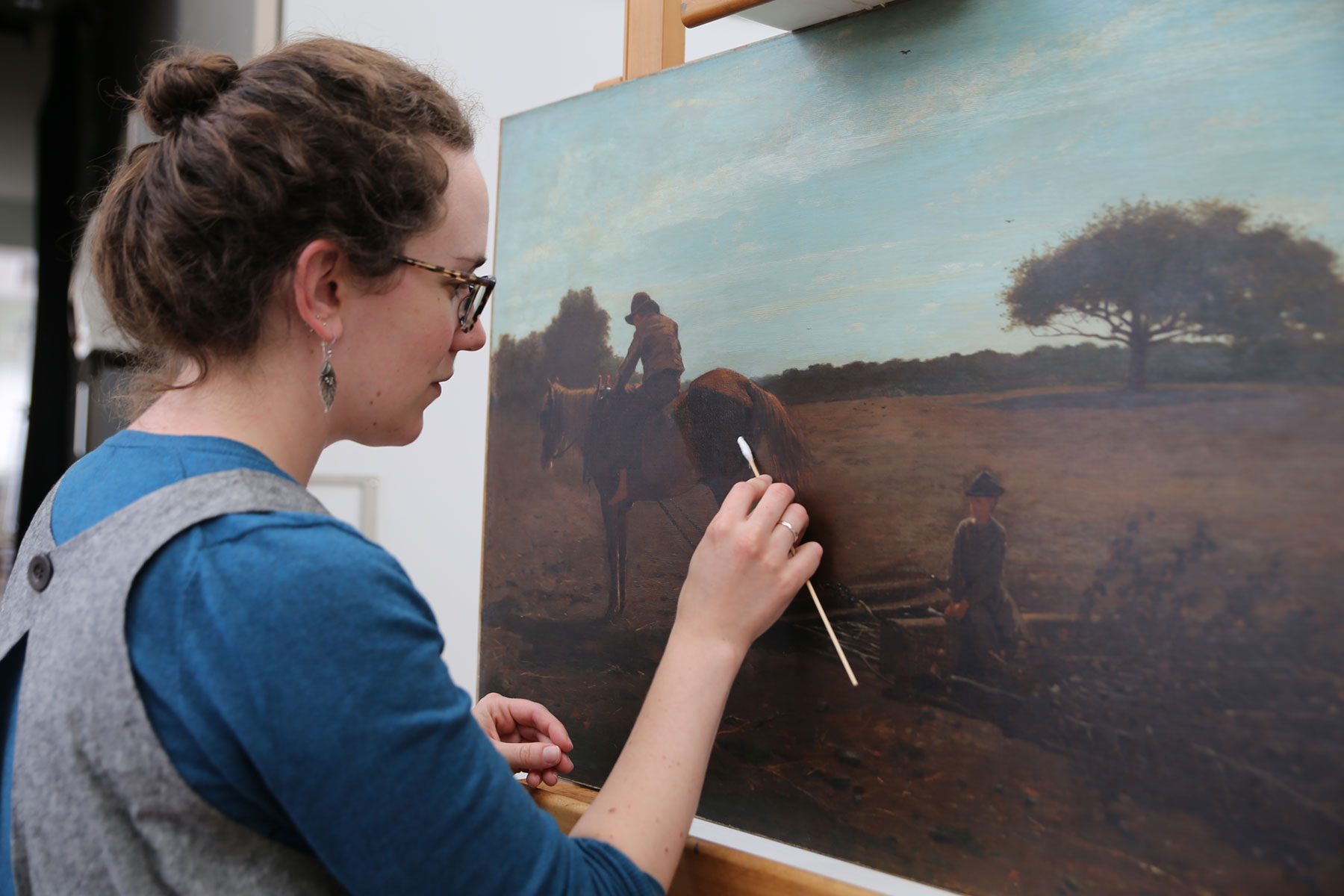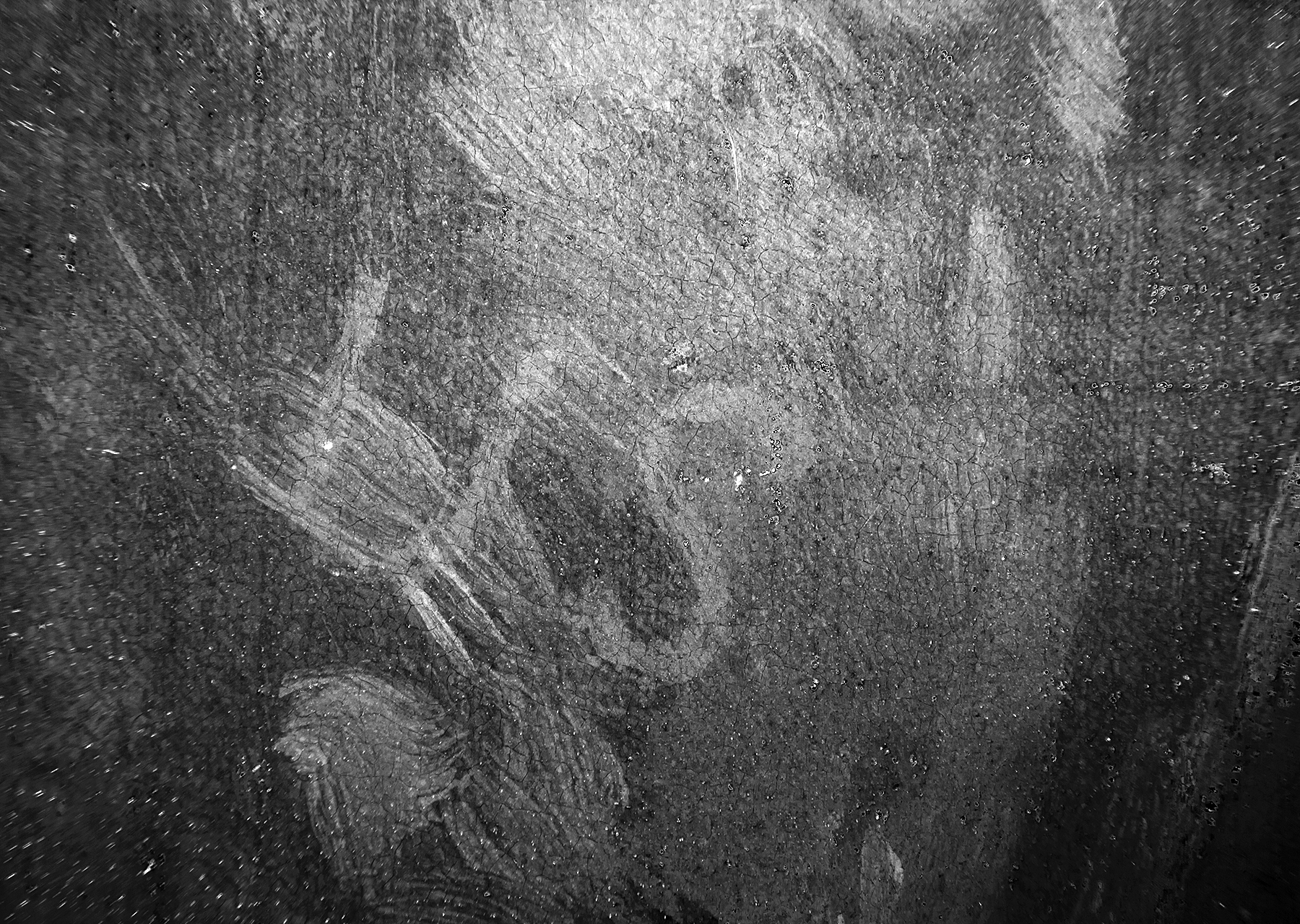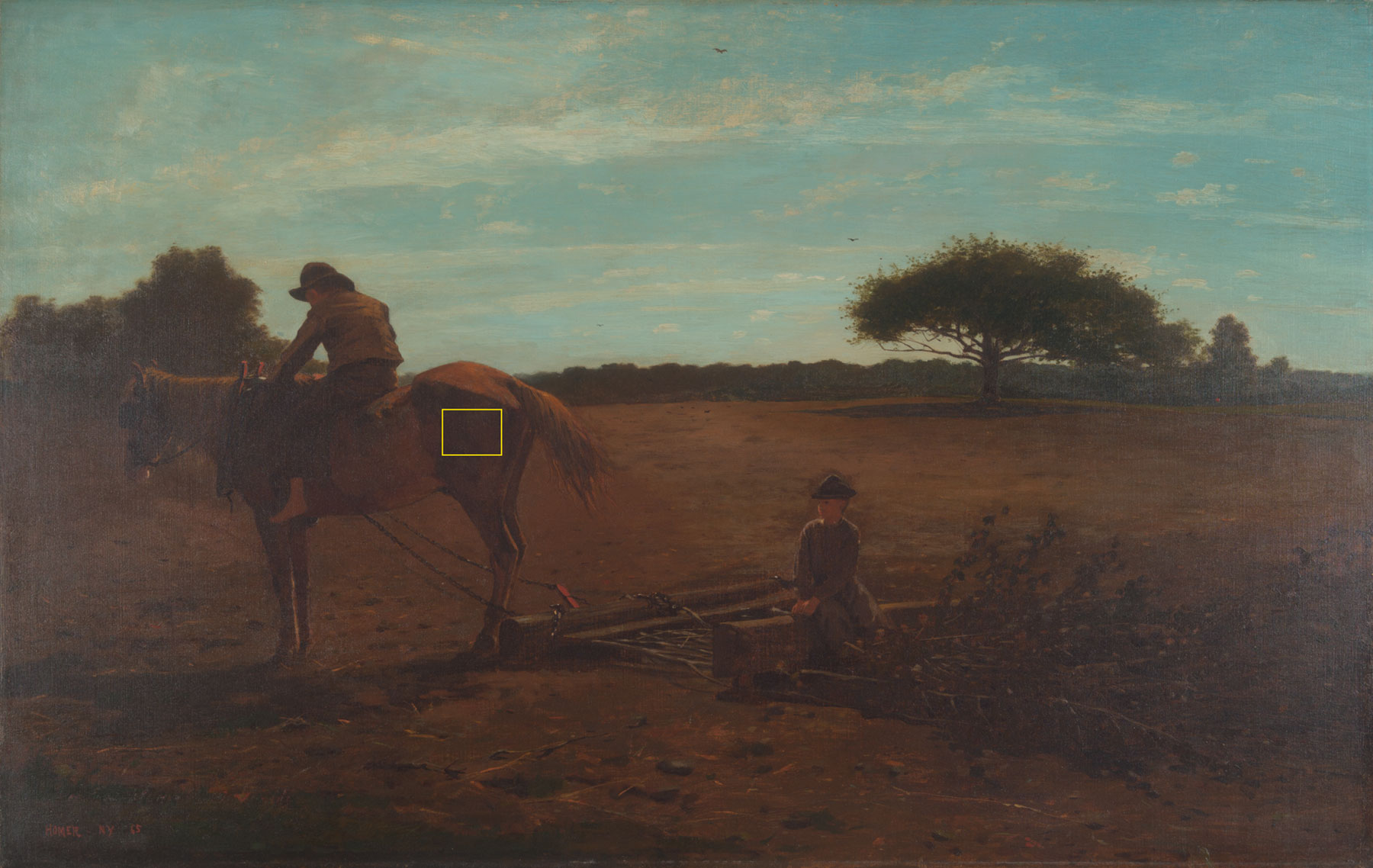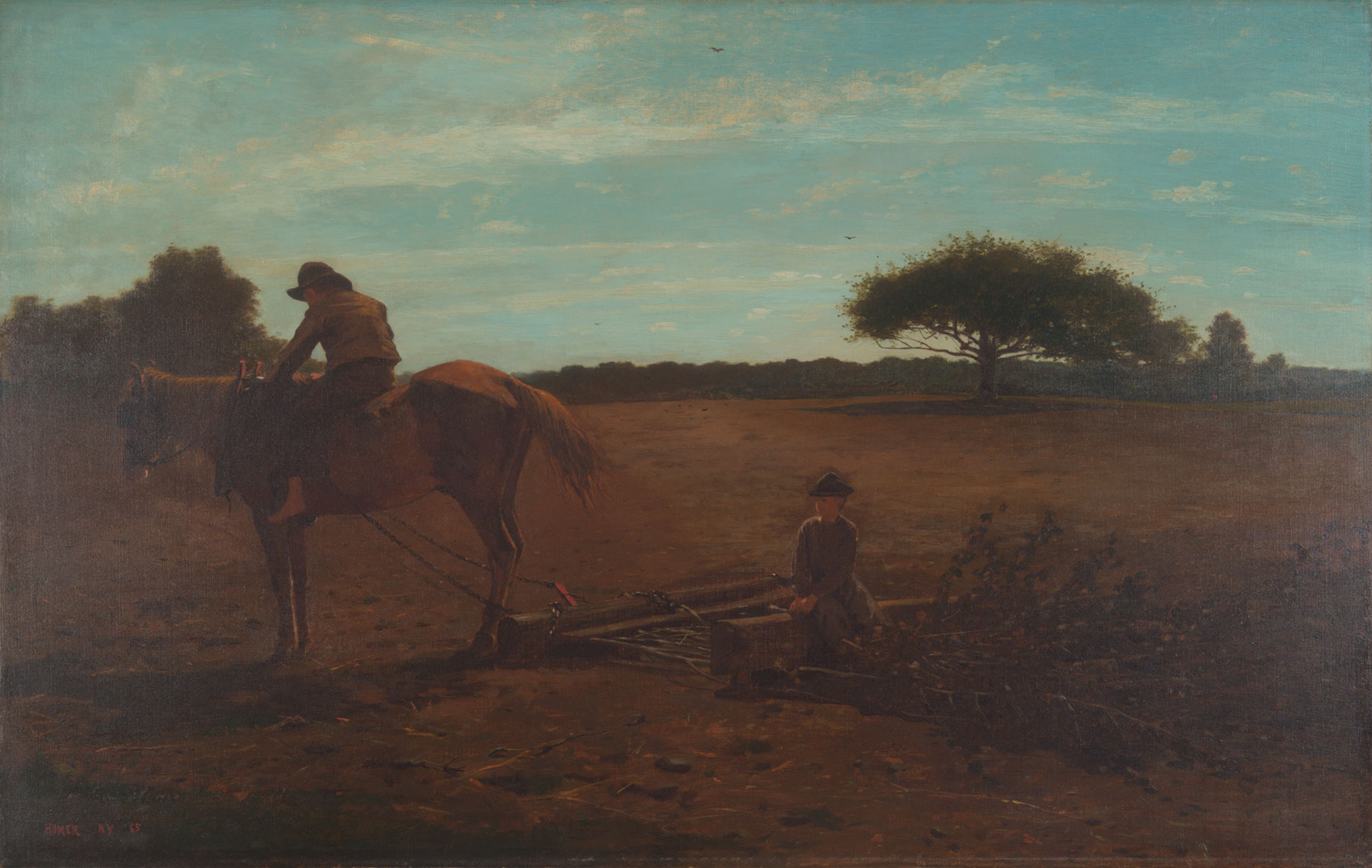If you glance quickly at Winslow Homer’s The Brush Harrow, you might not be able to tell that the subject relates to the Civil War. Depicting two children preparing a field using a harrow made of tree branches, the 1865 painting only hints at the aftermath of the war: children are doing the work of men, who perhaps have not returned home. But there’s another key detail that makes the connection clearer. The only problem is, it hasn’t been visible for decades.
As part of my fellowship in the Straus Center for Conservation and Technical Studies and in preparation for the exhibition Winslow Homer: Eyewitness, I conducted treatment and technical study of this painting (as well as of Pitching Quoits, Homer’s other Civil War painting in the collections). I wanted to learn more about the artist’s materials, early technique, and approach to his practice. By cleaning The Brush Harrow, I also hoped to improve our ability to view the composition—and uncover that element within the painting that could more directly link its subject to the war.
Background
When the painting was shown at New York’s National Academy of Design in 1866, it was said to contain the letters “US” on the horse, a brand indicating a Union army association. This detail was noted in a review from the 19th-century New York Leader, which commented that, “The horse is used up, or was never meant to be used, although marked U.S.”
However, by the 20th century, all traces of the brand had disappeared. It was not visible when The Brush Harrow entered the Fogg Museum’s collection in 1939, and attempts to locate it since then using advanced infrared and X-ray imaging techniques were unsuccessful. Thus, catalogue entries and wall texts describing the painting have often tried to explain the brand’s visual absence, noting correctly that various factors of the painting’s aging process may have reduced its visibility.
The foreground of The Brush Harrow is dark and subtle in contrast to the relatively brilliant opacity of the sky, in part because of how Homer painted it and in part due to its condition. Polyvinyl acetate varnish applied by conservators 52 years ago had discolored to a dull gray-brown and lost some of its saturation, which reduced contrast and changed the way we see the painting. We hoped that varnish removal would restore depth to the painting’s foreground, in the meantime helping us identify the brand on the horse or allowing us to finally give up the search.
The Treatment Process
Before treatment began, I closely examined the painting and photographed it in various lighting conditions, including ultraviolet and infrared. Together with conservation scientists in the Straus Center, I used X-ray fluorescence spectroscopy (XRF), a non-destructive analytical technique, to identify the pigments that Homer used.
Next, I removed surface dirt and grime. The thin layer of surface dirt was an orange-brown color; removing the surface grime improved the surface sheen of the painting and brightened the sky.
